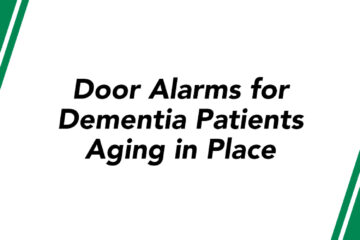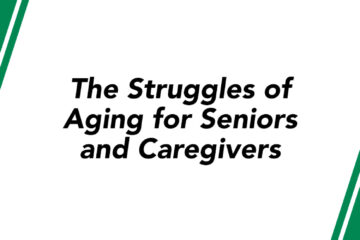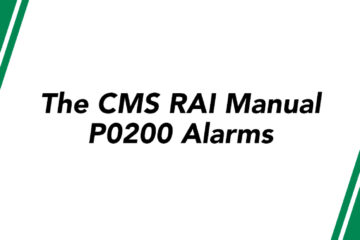How to Prevent a Fall in Medical Facilities
Safeguarding seniors from falling within a hospital setting is a major challenge that most health workers face on a daily basis. Hundreds of thousands of patients fall every year and 30 to 35 percent of those patients will sustain an injury.
Consequently, fall prevention is integral to patient health and mitigating any injuries as a result of a fall. Beyond that, fall prevention is also important for non-reimbursable costs to your facility, too. This is because the CMS deems falls as ‘preventable events’, thus limiting reimbursement if one occurs.
Despite this information, falls are still prolific within the medical setting. In fact, research has estimated that each year 700,000 to 1,000,000 patients fall in hospital every year (30-35%), which on average adds more than six days to a patient’s hospital stay. To break this down even further, it is recorded that across U.S hospitals, there were between 3.3 to 11.5 falls per 1,000 patient days – making accidental falls one of the most frequent incidents reported in hospitals.
Naturally, these falls have a ripple effect for those vulnerable individuals within the care facility, as a fifth of falls give rise to serious injuries such as a broken nose, concussion, hip fractures or head injuries. In fact, over 95% of hip fractures are the result of a fall (whether in the hospital setting or at home).
With all this information in mind, it’s very clear that falls can negatively impact seniors both physically and psychologically – likely accelerating their chances of dying prematurely. All of this is extremely eye-opening information to digest, particularly when they are completely preventable.
The Financial Cost of A Fall
Falls have a major financial impact on both patient and care facilities. It is estimated that falls cost hospitals around $50 billion in 2019. In 2012, it was estimated that the hospitalization of a fall was approximately $34,294, which, with an increase in the aging population, is likely to be considerably higher as time progresses. It is estimated that falls cost hospitals around $50 billion in 2019.
In many cases, estimates do not include costs that the patient might incur as a result of the fall. As outlined above, falls can lead to other health issues such as hip fractions which pose additional costs to both the patient (see our blog on medical costs for seniors) and medical facilities. Therefore, the actual cost of a hospital fall could be much higher than estimates indicate when you factor in damages and losses experienced by the patient to the direct costs incurred by the medical facilities.
Consequently, with a continued emphasis on Pay-For-Performance (P4P) within the American care facilities, all healthcare professionals have a vested interest in safeguarding patients from falling. This has been exacerbated by the CMS, who declared that payment to treating injuries following in-hospital falls are no longer permitted in 2008, making fall prevention the sole objection of many healthcare workers, doctors and stakeholders alike, working in unison to avoid preventable falls.
Your Responsibilities as a Healthcare Provider
The CMS have a responsibility to ensure all health facilities are as safe as possible. If your facility is in a condition which could injure a patient, then you could be sanctioned, which could result in the CMS removing your right to provide healthcare services. Moreover, as the CMS requires health professionals to undertake regular risk assessment, failing to do so will be a violation of your legal obligations and responsibilities, again resulting in you losing your medicare or medicaid funding.
Consequently, it is imperative that any medical professional and hospital setting prevents patients from falling. This is typically achieved by having an active fall management system in place.
How to Prevent Falls in Medical Facilities
Since the inception of ‘Speak Up’ in 2010 – introduced by the Joint Commission to increase fall awareness – there has been a more safety conscious America who are striving to avoid falls both in the home and in healthcare facilities. Here’s where fall prevention tools are extremely useful.
Safety equipment and fall prevention tools such as bed exit alarms and economy central monitoring unit systems are relatively inexpensive, but may help prevent serious injury and prolonged hospitalization. Our Economy Central Monitor is a valuable system which can help prevent falls.
The monitor is extremely versatile and easy-to-use, with a wireless nurse call system for caregivers to monitor their residents mobility and thus prevent falls. Moreover, the system has options to eliminate in-room alarm noise to comply with the CMS regulations (see CMS regulation blog for more detail).
How does it work? The system functions via a wireless signal that is transmitted silently to the central monitoring unit. Notification will then correspond with a number (1-40) that caregivers/hospital workers will associate with a specific patient. This system can be incorporated with various high-quality and also extremely affordable fall prevention products such as bed and chair sensor pads sending an early alert when the patient is attempting to get up), as well as pressure sensing floor mats, motion sensors and nurse call buttons. Their sole purpose is to alert healthcare workers that their patients are attempting to get up or move around, allowing them to respond to this alert BEFORE a fall occurs.
Upgrading your facility with fall prevention tools requires a reasonably low investment, but will pay for itself when it helps to demonstrate that your facility is safety conscious and has incorporated necessary precautions help avoid patient falls.
Remember: the price of a fall may include:
- Physical and psychological harm to your patient
- Further treatment beyond the original fall, taking up time and resources
- Hospitals needing to bear the full medical cost of a preventable fall
- Expensive litigation
- Your hospitals reputation
- Loss of medicare/medicare funding
- Loss of your right to provide healthcare services
With all of this in mind, it may be a fruitful idea to purchase fall prevention products within your care facility. With an ever-growing safety conscious America campaigning for fall awareness, it is crucial for your hospital to mitigate any losses to a patient’s overall well-being as well as any financial impacts that can be accumulated as a result of a fall, particularly when it can be PREVENTABLE.
For more information, browse our store today to find an extensive range of high-quality fall prevention products that are CMS compliant and affordable. Alternatively, call our team today to find out how we can help you and your facility!



